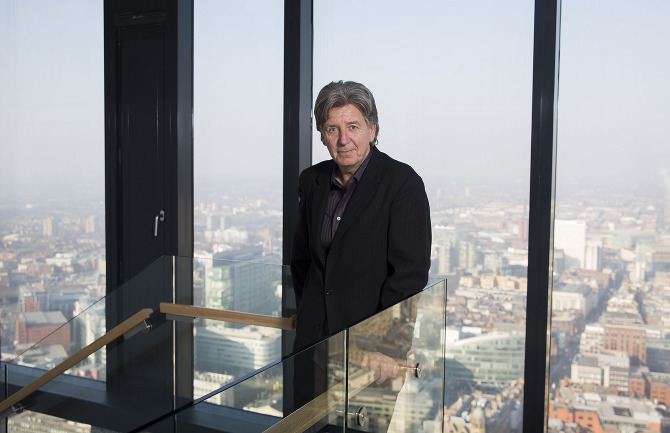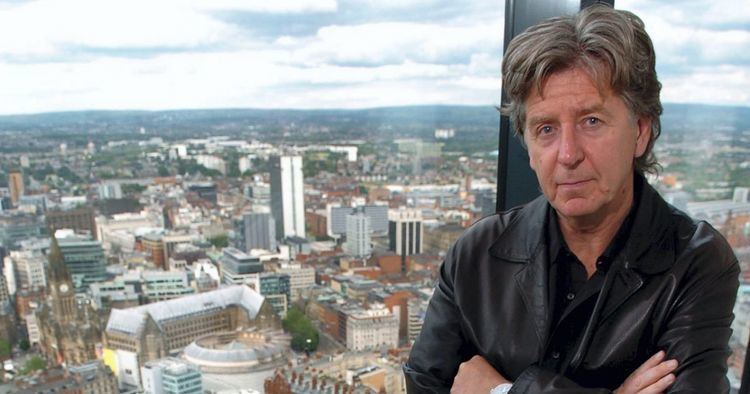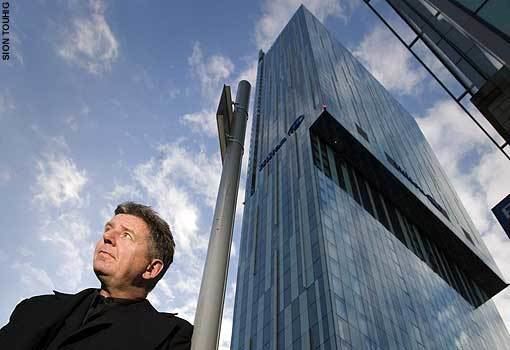Name Ian Simpson | ||
 | ||
In residence ian simpson
Ian Simpson (born c. 1955) is an English architect and one of the partners of SimpsonHaugh and Partners, established in 1987 with Rachel Haugh.
Contents

Biography

Ian Simpson was born and brought up in Heywood, near Rochdale, the oldest of six children. His father was a demolition contractor. Excelling in art and woodwork at school, and claims he knew he wanted to be an architect from age 12. He studied architecture at Liverpool Polytechnic and after he completed his studies he left to work in London with Foster and Partners.

After three years, he moved back to Manchester and set up Ian Simpson Architects with Rachel Haugh. Simpson's lecturer’s post at Manchester University paid the bills; the practice wouldn’t make a profit for almost ten years.

The main offices of the practice are in Castlefield, Manchester, and there is also has a London office, working on several projects in the capital. Beyond the UK, Simpson is building a new concert hall in Antwerp.

In 2002 he moved in to live in a large apartment at No1 Deansgate, a new building he designed as part of the post-bomb city centre reconstruction. He now lives with his long-term partner Jo Farrell and her daughter in the penthouse at the top of The Beetham Tower. He designed the building (described as "the UK’s first proper skyscraper outside London") and bought the top two floors (48th and 49th) as a 12,500 square foot shell before construction started. He was interviewed in his home by Daon Bruni for weekly on-line magazine Fashion Art and Design Weekly in August 2013. The apartment includes an olive grove: 30 mature trees were hoisted up by crane before the roof was completed. The views extend to 56km in clear weather.
Early days
The first projects were in Manchester, including the Green Room theatre, a nine-year project with Manchester Museum and work on Ducie House and in Castlefield, where the practice is still based. These brought Simpson to the attention of Sir Howard Bernstein and the city council.
In the early nineties, the City Council tasked a new group to look at urban design principles for the city and produce a Guide for developers. The group was convened and led by Lesley Chalmers, Chief Executive of Hulme Regeneration Ltd (a Manchester public/private regeneration partnership), following her facilitation of "A Guide to Development" for Hulme, published in 1994. (A scan of which can be seen here.) She gathered together a dozen development and regeneration professionals (and two academics in the field) and organised a structured series of site visits and discussion meetings to draft the “A Guide to Development in Manchester” (published January 2007). Ian Simpson was a member of the group, as was Nick Johnson, later to become CEO of Urban Splash.
When the IRA bomb struck in the City Centre in 1996, the text to the Guide was competed and agreed by the Council, awaiting illustration and formal publication. The Guide, which shortly afterwards adopted as Supplementary Planning Document and Planning Guidance (SPD) was issued as part of the Council's brief for production of a masterplan for the reconstruction of the city centre. Ian Simpson Architects joined the team led by EDAW, chosen after open competition. Ian's local knowledge and his strategy to grasp the opportunity to expand the city centre formed the core of the proposals.
"Manchester was divided between the wealthy south and poor north and Market Street was the dividing line," he says. "I wanted to break that barrier." The solution was New Cathedral Street, with Urbis, Cathedral Gardens and Exchange Square. Number One Deansgate, the city’s first high-end residential block, was built on the least commercially valuable plot. Simpson lived there for some years, before moving to the penthouse in the Beetham Tower.
Current
In 2013 he took on Nick Johnson, Urban Splash’s former deputy CEO, in a non-executive role to help explore future direction. Johnson and Simpson go back many years — they jointly owned the Atlas bar that Simpson designed — and they are both keen to bring some of Manchester’s entrepreneurial spirit, synonymous with its rebirth, back into the practice.
Simpson has also brought in experienced Manchester architect Roger Stephenson, whose own practice went into administration, helping him set up a new studio within the practice which will concentrate on projects at a different scale and type to Simpson and Haugh’s work. Source: Amanda Baillieu Building Design 9.5.13
